






Retracing the most important phases in the life of Rinaldo Piaggio makes it easier to understand the context in which the idea of building a vehicle like the Vespa was conceived and developed. It is a good story, the classic story of an Italian endowed with brilliance and character who was neither a poet, a saint nor a navigator but possessed an uncommon business sense. He was born on July 15th, 1864 to Francesca Dapino and Enrico Piaggio, a ship builder and trader.
The second half of the 19th century was a particular moment in Italy’s history. Industry was taking off, there was a lot of room for those who had talent and initiative and Rinaldo Piaggio certainly had both. In Sestri Ponente in 1884, at the age of 20, he founded a ship furniture manufacturing company which would relaunch his father’s shipbuilding activities. His business sense was such that it was not long before he was working for every big shipyard in Genova, including Ansaldo and Odero. Business relationships became family relationships when Rinaldo married Niccolò Odero’s daughter. The success of his enterprises grew exponentially and with time, every Ligurian ship that was launched had something of him and his furnishings on board.
Piaggio slowly expanded his area of interest from the sea to include the land. Trains became his new business and his carpenters were specialized in the repair and construction of train cars for the largest train companies in Italy.
The “Finalmarina Factory” was created with his brother-inlaw, Attilio Odero in 1906 and in 1908, bolstered by his continuous business successes, Rinaldo Piaggio was named Knight of the Order of the Italian Crown.
8 In Sestri Ponente, on September 24th, 1887, with a deed of incorporation, the limited partnership of Piaggio & Co. was officially formed to substitute the “Rinaldo Piaggio Company” that the twenty-year-old Rinaldo Piaggio had founded three years earlier.
9 A portrait of Enrico
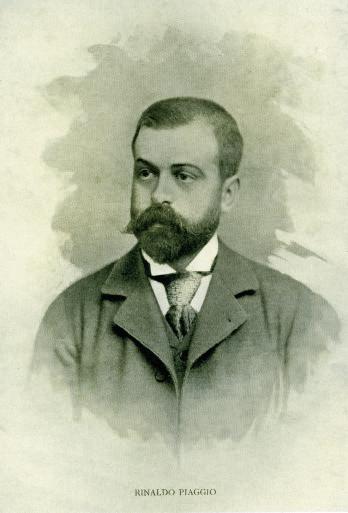



In fact, in 1946 the scooter was used as a base to create “the smallest pick-up truck in the world”. The threewheeled Ape or Bee was produced a year later and presented in the station wagon version known as the Calessino or little buggy that would become famous as the “world’s smallest taxi”.
The vehicle was created specifically for heavy work and while no changes were made to the front of the first models (the handlebars and the leg-protecting panel remained unchanged), two chain-driven wheels and a cargo bed were added on the back. Afterward, the Ape took on a life of its
own with an evolution that included moving the motor to the back, mounting an actual cabin and diversification according to the type of cargo. In some cases, it was possible to choose between a steering wheel and the classic handlebars with the gearshift on the left, just like the Vespa’s. In 2018, Piaggio presented two new vehicles to celebrate the seventieth anniversary of the Calessino launch: a limited, numbered series of 70 exemplars of the version made to transport people and the small Ape 50 fitted out with a low-emission motor that would respect the Euro 4 antipollution requirements.
This
ad
21 TOP The Ape was created only one year after the Vespa and had the same front end and motor. It could carry up to 440 lbs.
21 Bottom The Calessino, the little buggy, was the model that made the three-wheeler famous all over the world. It is still used as a minitaxi in many countries. In 2018, to celebrate its 70th anniversary, a limited edition of 70 vehicles was produced.

The revolutionary result was obtained with no modern design study. It was based simply on functionality research, and made no concessions to luxury except the chromed tube handlebars that were the only ones available at the time.
Thus, the Moto Piaggio 6 or MP6 was born. It was officially the first prototype of the definitive scooter and is still a source of inspiration for the styles and technological solutions of new generation Vespas. Over 70 years have gone by but a number of the original drawings are still being used: drawings of the anterior suspension inherited from an airplane and the forced-air cooling system with a fan fastened to the drive shaft that blows on the cylinder – still today the only effective technology for simple motors that have no radiator or water-cooled system.
The MP5 stirred no particular emotions in Enrico Piaggio and went down in history as rather undistinguished. On the other hand, Corradino d’Ascanio’s MP6 hit the bullseye and its informal baptism took place during the scooter’s first appearance, with no need for upper echelon summits or meetings. When the president saw the scooter’s rounded backend from above, it immediately reminded him of a wasp’s abdomen and from that day on, the scooter that was destined to become the most famous in the world has been known by the name of that very insect – the wasp or Vespa.


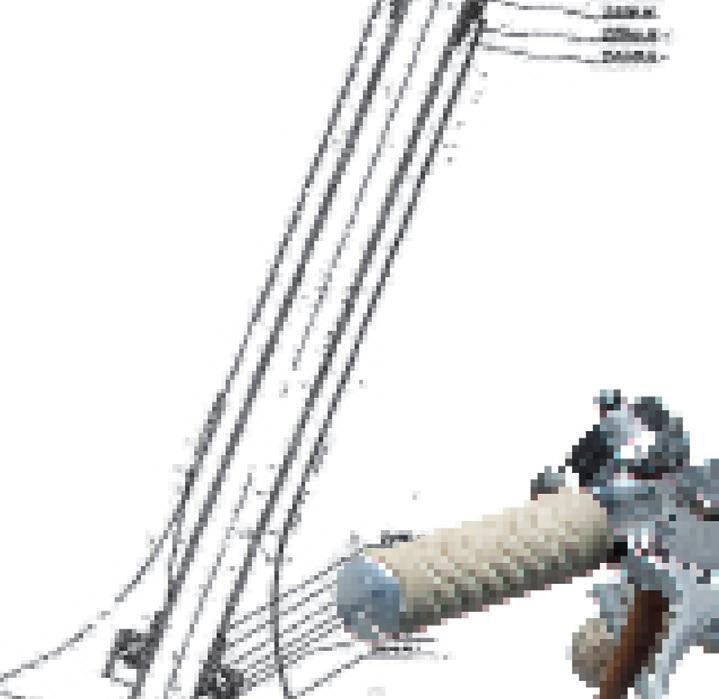

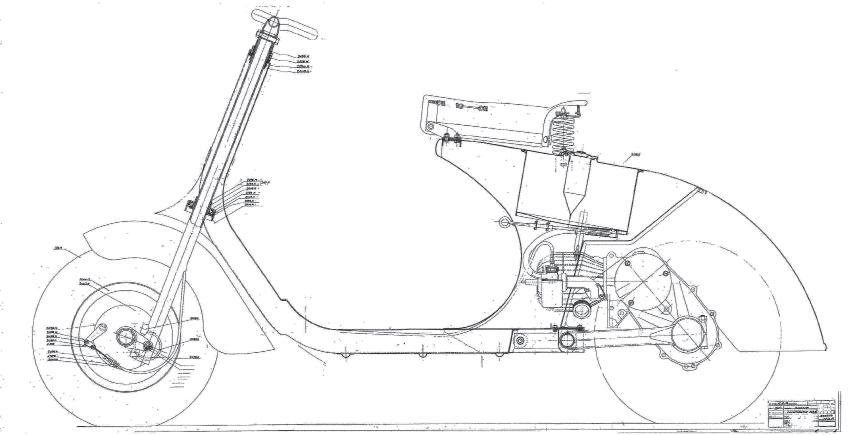
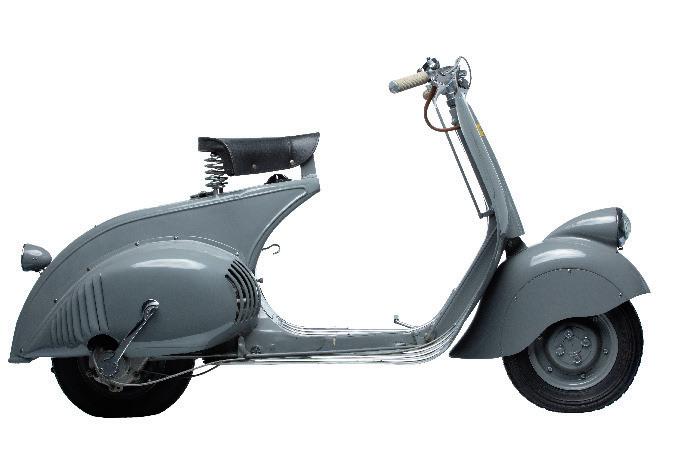




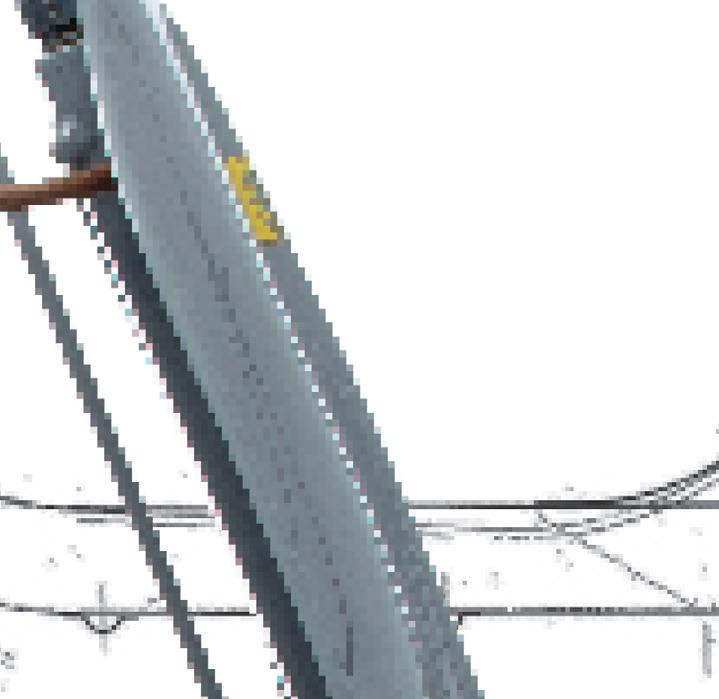
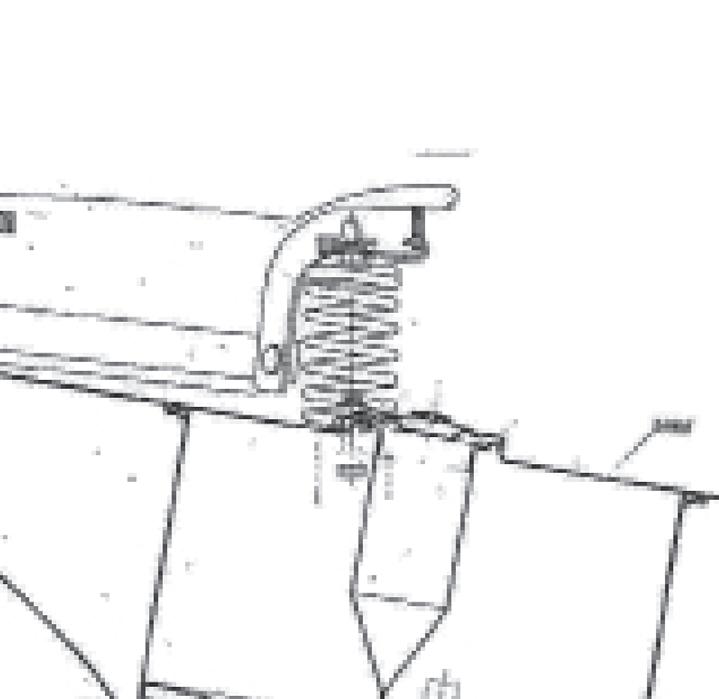
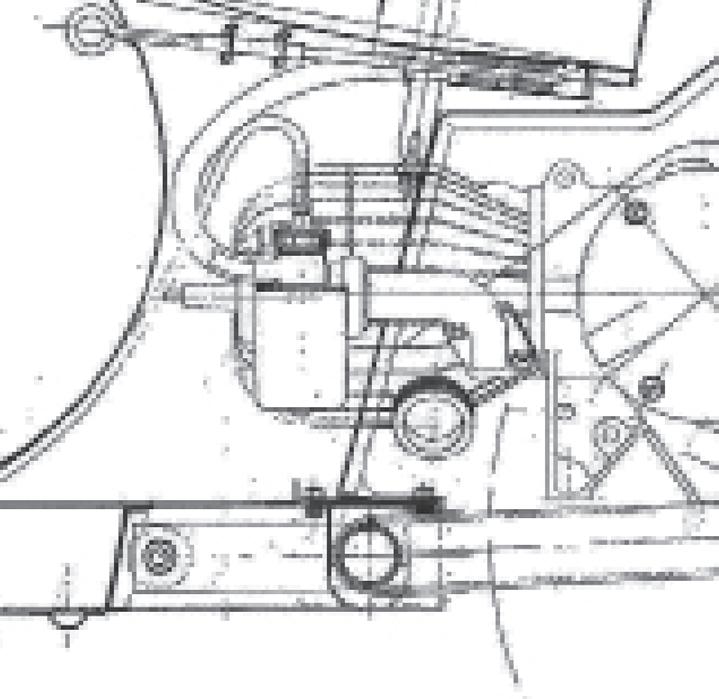






30-31 The MP6 prototype predicted all of the key points that would later be introduced in the Vespa 98 series. The project was not developed at the Pontedera factory but in Fornacette, a town about 3 miles to the west where the Technical Design Offices had temporarily moved to in 1945.










The Vespa was already in demand everywhere but Piaggio wanted to broaden its user base so, in the spring of 1952, the 125 U was put on the market. U was for Utilitaria or utilitarian but originally it was supposed to be named E for Economica or economical. It was a simplified model with fewer chromed details that listed for 130,000 lira (77 dollars today but, factoring in the buying power of the period, the equivalent of 23,000 dollars), 20,000 lira less than the highly popular standard 125. It was a promotional operation destined to lose money, since the savings in production would not be more than 8,000 lira. From a technical point of view, there was nothing new about it; the motor was the classic 125 with 4.5 HP (3.3 kW) and a speed of 43.5 mph (70 km/h). The simplification was in the accessories. It was available in one color only, the same green used for a low-cost model for the United States. The motor cowl was smaller and the headlight was on the handlebars instead of on the fender for the first time. The Vespa logo on the leg shield was no longer embossed in metal; it was a black decal instead. Despite its special price, the U never gained the success that Piaggio had expected and production was limited to 6,000 vehicles in the first and only series, most of which were sold abroad. A few hundred 125 Us were left in the Pontedera warehouse until 1955 and the last two were exported to Portugal on December 28th, 1961.
50 Top A close-up of the headlight that was on the handlebars rather than on the fender for the first time since 1946.

1972 - 1979



Historically, scooter experts have considered this model the flagship where technology, fast touring and style converge. It was the first to have the Spanish Femsa electronic starter. It also had an automatic gasoline and oil mixer for the Italian market, something Piaggio had already patented in 1968 and presented on models destined to foreign markets. The Rally 200 is the evolution of the 1968 180 and for true believers such as the legendary test driver and pilot from Pontedera, Giuseppe Cau, it is the perfect essence of

Corradino d’Ascanio’s concept. The engineers were able to successfully design a fuel distribution similar to that of a motorcycle. Nothing like it had ever been done by Piaggio before, not even with the superfast GS that was considered its forerunner.
It was the first time the company introduced a 200 cc motor, which was overall the most powerful standard motor (specialists in racing performance kits had reached 231 cc).

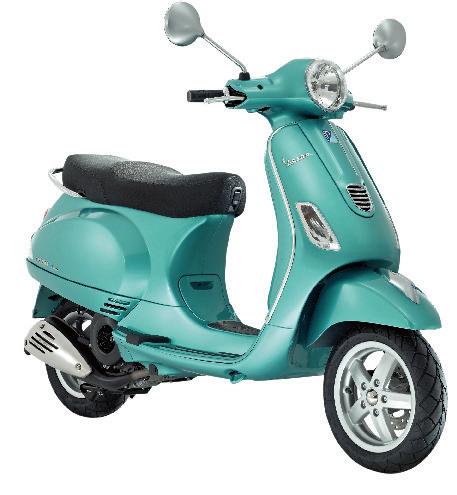


The LX was the 139th Vespa model presented in the sixty years following 1946 and was the most modern heir in the scooter’s unique history of style. It followed the ET, the model that energetically relaunched the scooter from Pontedera, and arrived just in time to celebrate the Vespa’s sixtieth birthday. The esthetic modifications it underwent were substantial but not excessive. The continuity of the ET design was evident and despite its more modern, angular lines, it was immediately identifiable as a Vespa. The LX’s handlebars were the ones introduced on the Granturismo and the scooter’s standard equipment package was richer. Its new elements were not limited to esthetics and, in fact, the technological modifications were the most important ones. For the first time on a small Vespa, the diameter of the front wheel was increased to 11 inches (the back wheel stayed at 10) to improve stability and handling. The braking system was unaltered: a disk in front and a drum in back.
It was available with four different Euro2-approved motors (the standard at the time): the two and four-stroke 50 cc and the more “adult” versions, the four-stroke 125 and 150 cc – all of which were strong, simple, air-cooled motors.
The LX was also the first small-bodied Vespa to mount electronic fuel injection on its four-stroke motors (a two-stroke direct injection motor was introduced on the ET2), which improved performance, mileage and emissions.
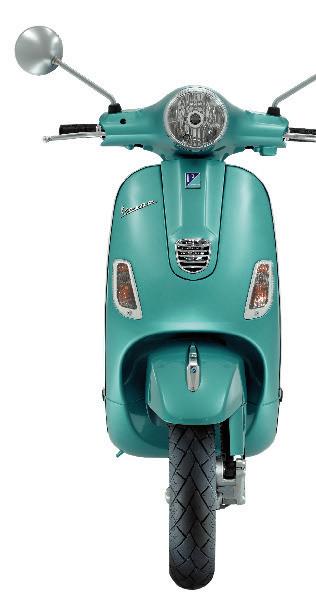


152 A scooter driven by a globe was the clear international message of this advertisement from 1961.
represents the
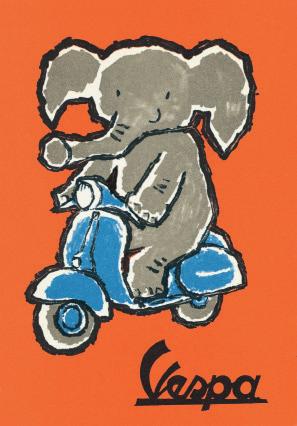
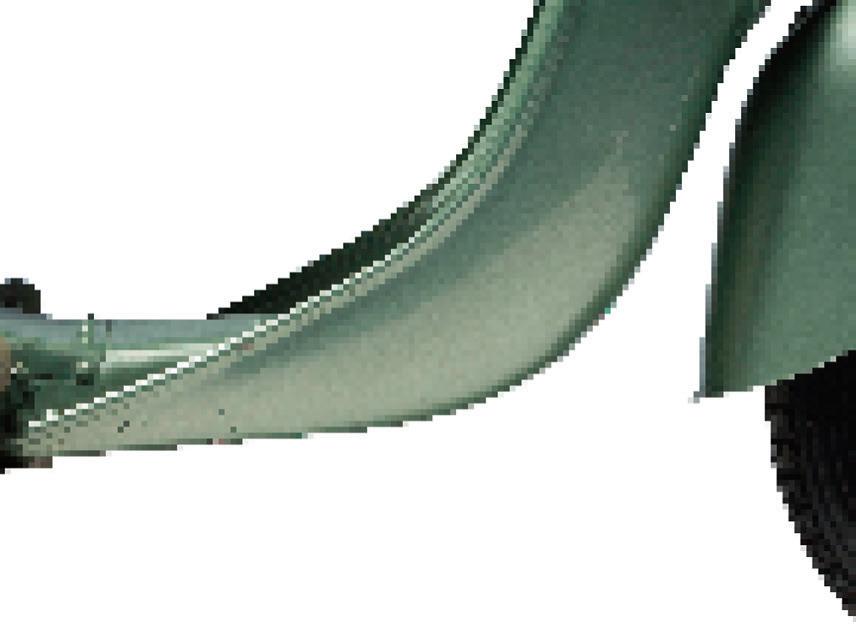

190 The Super Sport was a limited edition of racing Vespas. Constructed in two batches, it had an 8 HP motor and a lightalloy body that kept its total weight under 132 lbs (60 kg). During trial runs, it reached speeds of 72 mph (116 km/H).
190-191 Another version of the Super Sport that was introduced in 1950 was dedicated to the pilots who raced the 125s with fairings resembling those on the Vespas used to conquer endurance records. They were meticulously designed and could reach speeds of 80 mph (130 km/H).

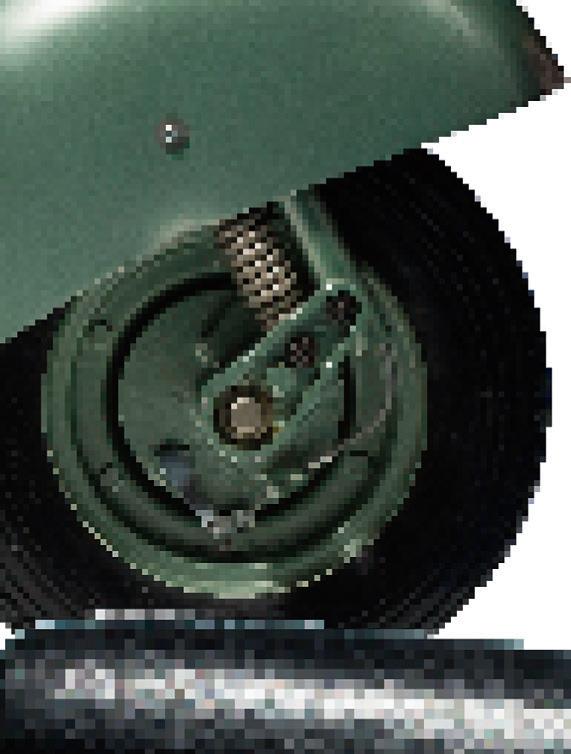
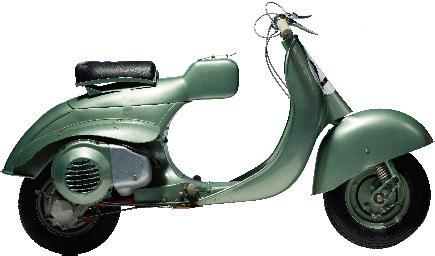
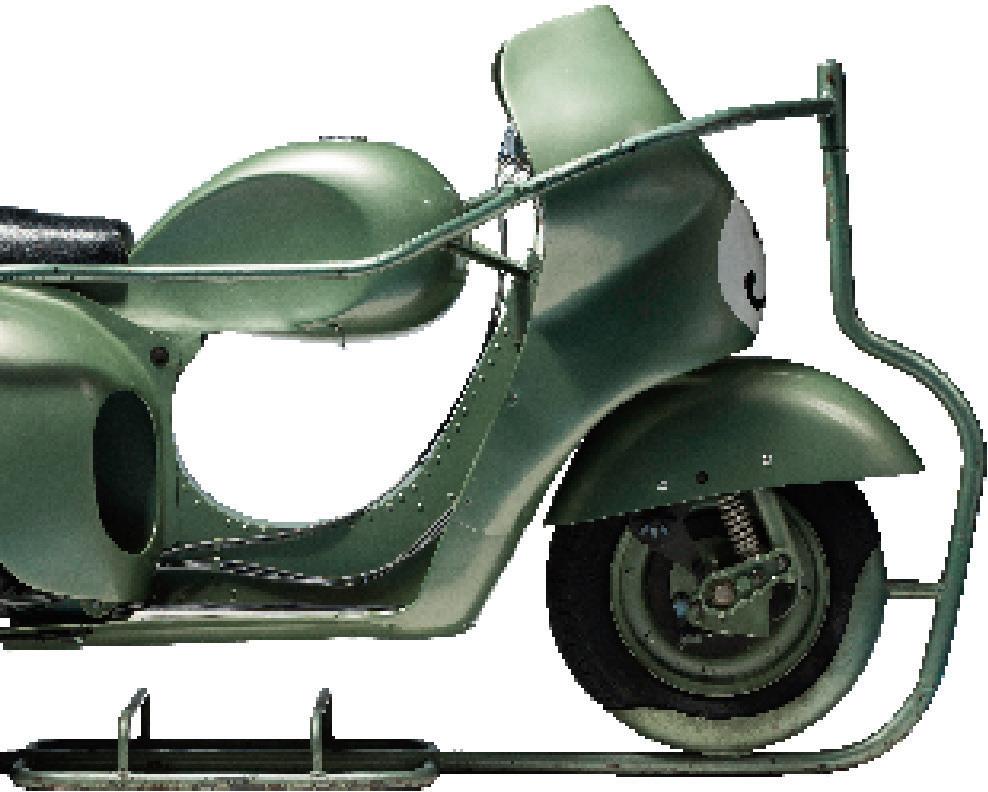
Agility is fundamental on an obstacle course but it is also a determining factor on city circuits, even when a scooter is significantly less powerful than the sports bikes it is competing against, a fact demonstrated by the victories in the Lakes Trophy and the Florence Race in 1948. Even more significant was the Vespa’s success in the Indus-
try Trophy in 1949. The mini-championship has three very difficult trials: The Shield of the South, the 24 Hours and the Thousand Miles. Seven Vespa teams were registered and all of them finished the three races with no penalties, passing motorcycles that were over four times more powerful than their own.

Long before they discovered that they were riding an object that would find its place in New York’s Museum of Modern Art (the 1955 150 GS), Vespa riders gave in to the fascination of personalization, exactly like the loyal fans of another two-wheeled icon, the Harley-Davidson. A windshield, chromed detailing and special mufflers were part of basic customizing, at least up until 1962 when, a 150 S was transformed from vehicle to work of art in an instant. With
just a few brush strokes, the master of metaphysics and surrealism, Salvador Dalí, decorated the right side cowl, wrote the name of his beloved wife and muse, Gala, and signed his name on the scooter of two young men he met in Cadaquez. These were not just any two young men. They were two Madrid University students that, only a few days earlier, had departed on their own version of a trip “Around the World in 80 Days”, one of the first great rides in history.
208-209 The Spanish-made Vespa 150 S used by two university students to make a trip around the world in 79 days is probably the most valuable scooter in the world. The two cowls were painted and autographed by Salvador Dalí.





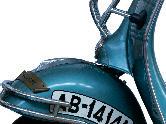

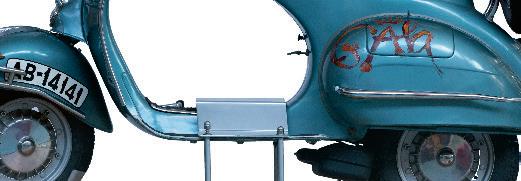










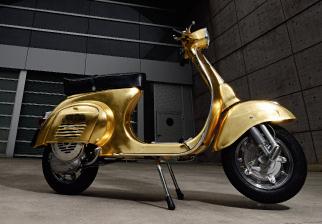




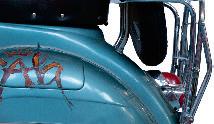



It is said to be the most valuable Vespa in the world even if some of the rarer and more sought after exemplars have been sold for five figures. But it is certainly not the only valuable one. Others include the very special version of a 125 Primavera from the 1970s fitted out in 2015 by Polini Motors, a company from Bergamo specialized in racing kits. Besides being equipped with an array of specific parts, it was covered with over 500 extremely delicate sheets of 23k gold leaf. It was a limited edition that sold for 48,200 dollars (42,000 euros).
209 Number 1 of a series produced on request by Polini Motors: the elaboration kit that transforms it into a SuperVespa Primavera is hidden under a 23-K pure gold-plated body.


